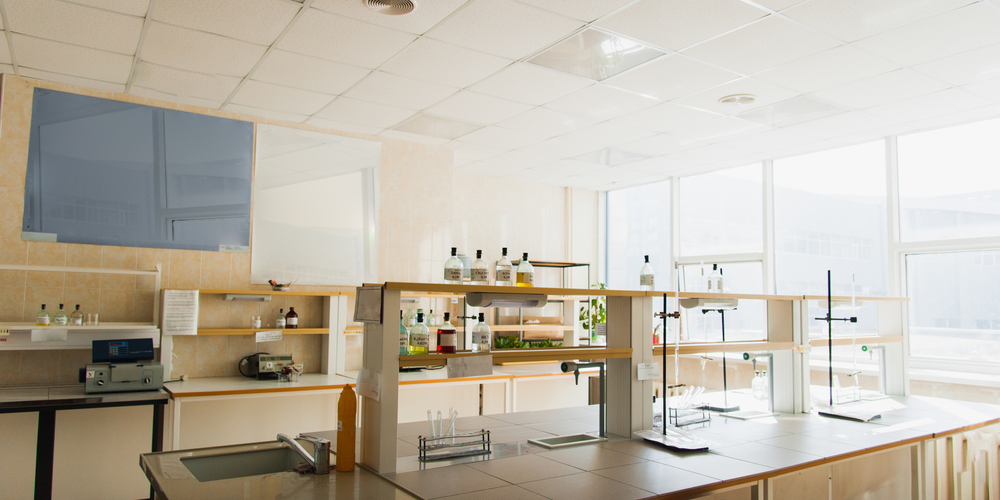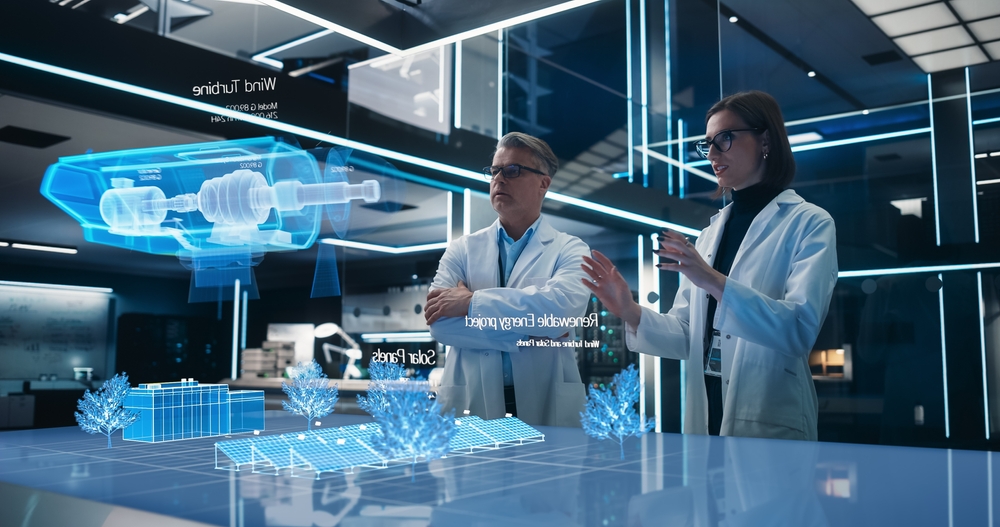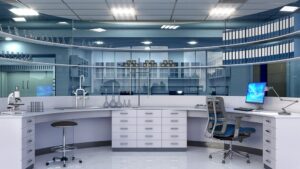
As the world shifts towards more sustainable practices, laboratories are no exception in adopting eco-friendly innovations. From energy-efficient equipment to waste-reduction strategies, modern labs are evolving to meet the demands of environmental responsibility. One often-overlooked aspect of this green transformation is laboratory furniture. Traditional lab furniture, often made from resource-intensive materials, can have a significant environmental footprint.
In response, eco-friendly laboratory furniture is emerging as a key component in sustainable lab design. By choosing furniture made from recycled materials, renewable resources, and energy-efficient manufacturing processes, labs can significantly reduce their environmental impact. This article explores the importance of sustainable lab furniture and highlights the options available for those looking to create a modern, eco-conscious lab space.
Why Sustainable Laboratory Furniture Matters
Laboratories are hubs of innovation, but they also have the potential to generate significant environmental impacts.
Traditional laboratory furniture, often constructed from non-renewable materials like plastic laminates or steel, contributes to the depletion of natural resources and high levels of energy consumption during production. Additionally, harsh chemical treatments used in manufacturing can emit harmful pollutants, leading to indoor air quality issues that affect the health of lab workers.
Adopting sustainable laboratory furniture addresses these concerns by minimizing environmental harm and promoting healthier workspaces. Eco-friendly furniture options, made from recycled materials, responsibly sourced wood, and low-toxicity finishes, reduce the strain on the environment and support the well-being of laboratory personnel.
These sustainable choices align with broader environmental goals, helping labs to reduce their carbon footprints and contribute to global sustainability initiatives.
Moreover, eco-conscious furniture can be an integral part of a lab’s pursuit of certifications like LEED (Leadership in Energy and Environmental Design) and WELL building standards, which are increasingly valued in research and corporate environments. LEED focuses on the laboratory’s role in the environment, and WELL focuses on the building’s impact on the lab personnel.
As sustainability becomes a competitive edge, adopting eco-friendly furniture is not just an ethical choice, but a smart investment for labs aiming to future-proof their operations while making a positive environmental impact.
Additional Reading: Comparing Steel vs. Plastic Casework For Your Lab

Key Features of Eco-Friendly Laboratory Furniture
When selecting sustainable laboratory furniture, it’s essential to look for key features that ensure both environmental responsibility and functionality. Eco-friendly lab furniture isn’t just about using green materials—it’s about designing for durability, efficiency, and adaptability. Here are the defining characteristics that make furniture truly sustainable for modern labs:
1. Sustainable Materials
Eco-friendly lab furniture is often made from recycled, renewable, or responsibly sourced materials. This can include everything from bamboo and reclaimed wood to recycled metals and plastics. These materials reduce the demand for virgin resources and minimize waste.
Additionally, manufacturers may use non-toxic adhesives and finishes, further reducing the environmental impact while maintaining the furniture’s resilience to the rigorous demands of a laboratory setting.
2. Energy-Efficient Manufacturing
The processes involved in creating eco-friendly furniture emphasize energy conservation and reduced emissions. Many manufacturers now adopt low-energy production methods and prioritize local sourcing to cut down on transportation-related emissions. Sustainable production also involves minimizing waste during manufacturing, ensuring that even offcuts and surplus materials are recycled or repurposed.
3. Durability and Longevity
Sustainable furniture is built to last, which is crucial in reducing the need for frequent replacements. Long-lasting materials, reinforced joints, and high-quality finishes ensure that lab furniture can withstand heavy use over time, thus reducing the waste generated by disposal and replacement.
Durable furniture reduces costs in the long term and minimizes the environmental impact associated with producing and shipping new pieces.
4. Ergonomics and Adaptability
Sustainable design also considers the well-being of lab personnel. Eco-friendly furniture is often designed with ergonomics in mind, providing comfort and reducing strain during long hours of research. Additionally, adaptability is a critical feature—modular and adjustable furniture can easily be reconfigured to suit changing lab needs, extending its lifecycle and reducing the need for new purchases as lab requirements evolve.
By focusing on these key features, eco-friendly laboratory furniture offers a combination of sustainability, durability, and functionality that supports both the environment and the efficiency of modern labs.

Popular Sustainable Lab Furniture Options
As eco-conscious design becomes more integrated into laboratory spaces, various sustainable furniture options are emerging that meet the functional needs of research environments while minimizing environmental impact. Below are some of the most popular eco-friendly lab furniture choices available today:
1. Eco-Friendly Lab Benches and Workstations
Workbenches and lab tables are central to any laboratory, and choosing sustainable options can make a significant difference. Eco-friendly benches are often made from recycled aluminum, stainless steel, or sustainably harvested wood.
Many also feature non-toxic coatings and laminates, which avoid the release of harmful volatile organic compounds (VOCs) into the lab environment. These benches are durable, versatile, and can often be modular, allowing labs to adjust layouts without purchasing new furniture.
2. Sustainable Storage Solutions
Laboratories require extensive storage, and opting for sustainable casework and shelving can drastically reduce waste. Sustainable storage solutions include cabinets made from recycled steel, reclaimed wood, or renewable bamboo.
Many manufacturers offer toxin-free finishes that are resistant to corrosion, chemicals, and heat, ensuring longevity without compromising the environment. Modular shelving systems also allow for flexibility, ensuring that the furniture remains useful as lab requirements change.
3. Adjustable and Modular Furniture
Adjustable lab furniture is another popular sustainable option, offering flexibility and long-term usability. Height-adjustable desks and modular benches enable researchers to tailor their work environment to their needs, promoting comfort and reducing physical strain.
Additionally, modular designs allow labs to reconfigure their setups without needing to invest in new furniture, cutting down on material waste and unnecessary purchases.
4. Ergonomic and Eco-Conscious Chairs
Seating plays a critical role in lab environments, and sustainable chairs offer ergonomic support while minimizing environmental impact. Many eco-friendly lab chairs are made from recycled plastics, steel, and fabrics, with design elements that focus on comfort and posture.
Look for chairs that have adjustable features, recyclable materials, and certifications that ensure they meet sustainability standards. By incorporating these sustainable furniture options, laboratories can significantly reduce their environmental footprint while creating efficient, adaptable, and comfortable workspaces.
Technological Integration with Eco-Friendly Designs

In today’s modern labs, sustainability goes hand-in-hand with technological innovation. As laboratories evolve to include cutting-edge equipment and smart technology, eco-friendly lab furniture is also designed to integrate these advancements seamlessly. This integration not only enhances lab efficiency but also helps reduce energy consumption and improve overall sustainability.
1. Energy-Efficient Equipment Support
Eco-friendly lab furniture is often designed to support energy-efficient lab equipment. For example, workstations with integrated power management systems help reduce standby energy consumption, while custom-designed lab benches accommodate energy-efficient HVAC systems and lighting. Furniture is also being developed with built-in cable management systems to ensure clean, organized workspaces that improve airflow and reduce unnecessary power usage.
Additional Reading: Eco-Saver Fume Hood

- Smart Furniture with Sustainable Benefits
Technologically advanced lab furniture includes features like embedded sensors that monitor temperature, humidity, and air quality, allowing labs to maintain optimal working conditions without wasting energy. Some designs even integrate smart charging systems that automatically power down equipment when not in use, further contributing to energy savings.
This type of smart technology reduces the environmental impact while ensuring lab workers have the data they need to operate efficiently.
3. Maximizing Space and Efficiency
Modular and adjustable eco-friendly furniture is often designed with technology in mind. For instance, height-adjustable lab benches and tables can accommodate different types of equipment, allowing researchers to configure their workspace based on the specific tools and technology they’re using.
This adaptability reduces the need for additional furniture purchases and ensures that labs can optimize their available space without compromising sustainability.
4. Sustainable Data-Driven Design
The integration of technology allows lab furniture manufacturers to utilize data analytics to improve sustainability. By analyzing how lab furniture is used over time, manufacturers can refine their designs to enhance energy efficiency, ergonomics, and durability. This data-driven approach ensures that future generations of lab furniture continue to reduce their environmental impact while improving functionality.
By blending technology with sustainable design principles, laboratories can maximize efficiency, reduce energy usage, and create eco-friendly work environments that support both innovation and environmental responsibility.
Choosing Sustainable Laboratory Furniture: Key Considerations
Selecting the right eco-friendly lab furniture involves more than just picking pieces made from recycled materials. There are several factors to consider, ensuring that the furniture aligns with both the functional needs of the lab and its environmental goals. Here are the key considerations to keep in mind when choosing sustainable laboratory furniture:
1. Material Certifications and Environmental Credentials
When evaluating furniture, look for certifications that verify the sustainability of the materials used, such as GREENGUARD, a certification that indicates a product meets strict chemical emissions standards. Cradle-to-cradle is another win-win certification, which means a product is designed so that its materials and components can be repurposed- or recycled indefinitely.
Additionally, check for third-party certifications related to indoor air quality and non-toxicity, as this ensures that the furniture promotes a healthy working environment.
2. Durability and Longevity
Sustainable lab furniture should be built to last. While eco-friendly materials are important, durability is equally crucial in reducing long-term environmental impact. Furniture that wears out quickly leads to frequent replacements, generating waste and increasing costs. Opt for furniture designed with high-quality, durable materials and robust construction to withstand the demands of a busy lab environment for years to come.
3. Adaptability and Modularity
Labs are dynamic spaces where needs can change rapidly. Choosing furniture that is modular and adjustable allows labs to reconfigure their spaces without having to invest in new pieces.
Modular designs are not only cost-effective, but also reduce the waste associated with purchasing and disposing of non-adaptable furniture. Adjustable workstations, shelving, and storage solutions ensure that your lab can grow and evolve sustainably.

4. End-of-Life Considerations
Consider the full lifecycle of the furniture, including how it will be disposed of when it reaches the end of its use. Furniture made from recyclable or biodegradable materials will have a significantly lower environmental impact when it’s time to replace it.
Some manufacturers even offer take-back programs, where old furniture can be returned for recycling or refurbishment, ensuring a circular lifecycle and minimizing waste.
5. Balancing Cost with Long-Term Benefits
Sustainable lab furniture may have a higher upfront cost compared to traditional options, but the long-term benefits often outweigh the initial investment. Eco-friendly furniture tends to be more durable, reducing replacement costs, while energy-efficient designs can contribute to lower utility bills.
Additionally, furniture that helps labs meet sustainability certifications can lead to grants, tax incentives, or increased funding opportunities for green initiatives.
By considering these factors, labs can make informed decisions that not only support sustainability but also enhance the functionality and efficiency of their workspaces.
Case Study: Successful Implementation of Eco-Friendly Lab Furniture
To highlight the benefits of sustainable laboratory furniture, let’s examine a real-world case study where a research facility successfully implemented eco-friendly solutions.
The Green Science Research Center
The Green Science Research Center, a cutting-edge research facility focused on environmental science, set a goal to reduce its overall carbon footprint while maintaining the highest standards of functionality and efficiency. As part of a larger sustainability initiative, the center prioritized eco-friendly laboratory furniture in the design and outfitting of its new lab spaces.
- The Challenge
The facility needed durable, high-performance furniture that could withstand intensive daily use, support sensitive scientific equipment, and remain adaptable to the evolving needs of its research teams. At the same time, it aimed to reduce resource consumption, promote energy efficiency, and improve indoor air quality.
- The Solution
The Green Science Research Center partnered with a manufacturer specializing in eco-friendly laboratory furniture. They chose modular workbenches made from recycled aluminum and stainless steel, ensuring longevity and strength while minimizing the use of new materials. The workstations were designed to be height-adjustable, allowing staff to reconfigure spaces easily as their research demands shifted.
In addition, the facility opted for cabinetry made from FSC-certified wood, treated with low-VOC finishes to enhance air quality. The furniture was designed with built-in cable management and power-saving features that helped reduce the energy consumption of lab equipment. Furthermore, eco-friendly equipment like fume-hoods in various sizes were installed.
- The Results
By integrating eco-friendly furniture, the center saw significant improvements in both sustainability and operational efficiency. The recycled materials used in the furniture reduced the center’s reliance on non-renewable resources, while the low-VOC finishes contributed to a healthier indoor environment.
Moreover, the adaptability of the modular designs allowed the lab to reconfigure spaces as research priorities shifted, eliminating the need for additional furniture purchases.
The Green Science Research Center also achieved LEED certification for its sustainable design, reinforcing its commitment to environmental responsibility. Beyond the environmental benefits, the durable, adaptable furniture turned out to be a cost-effective investment, with reduced replacement costs and improved workflow efficiency over time.
This case study illustrates how eco-friendly laboratory furniture can lead to sustainable, cost-effective, and efficient lab operations while supporting broader environmental goals.

The Future of Eco-Friendly Lab Furniture
As sustainability continues to be a driving force across industries, the future of eco-friendly lab furniture looks promising. Innovations in materials science, design, and technology are shaping the next generation of sustainable furniture, offering laboratories more opportunities to reduce their environmental footprint while enhancing efficiency and adaptability.
1. Advanced Sustainable Materials
The development of new, eco-friendly materials will play a crucial role in the future of lab furniture. Researchers are exploring the use of bioplastics, made from renewable biological sources like cornstarch and sugarcane, which can serve as alternatives to traditional petroleum-based plastics.
Additionally, sustainable composites made from recycled fibers and natural resins could offer the same durability as traditional materials without the environmental impact. These innovations will lead to furniture that is both sustainable and capable of withstanding the rigorous demands of lab environments.
2. Circular Economy and Closed-Loop Systems
The concept of a circular economy is gaining traction in furniture design, and laboratory furniture is no exception. In a circular system, products are designed to be reused, refurbished, or recycled at the end of their lifecycle, minimizing waste and resource consumption.
Future lab furniture will increasingly be built with end-of-life considerations in mind, with manufacturers offering take-back or refurbishment programs to ensure a closed-loop system. This approach reduces waste, extends the life of furniture, and supports a more sustainable manufacturing model.
3. Integration of Smart Technologies
As technology becomes more integrated into lab environments, furniture will evolve to accommodate these advancements. The future of eco-friendly lab furniture will likely include smart systems that monitor energy usage, environmental conditions, and even furniture wear-and-tear.
For example, desks and workstations may feature sensors that automatically adjust lighting or ventilation based on occupancy, reducing energy consumption. These innovations will help labs become more energy-efficient, reducing both operational expenses and environmental impact.
4. Customization and Modularity
The demand for customizable, modular furniture will continue to grow as labs require flexible solutions that adapt to changing research needs. Future eco-friendly lab furniture will focus on scalability and modularity, allowing laboratories to reconfigure spaces quickly without generating unnecessary waste.
This adaptability will extend the lifespan of furniture, reducing the need for constant replacements and promoting sustainability.
5. Increased Focus on Health and Well-Being
In addition to environmental sustainability, future lab furniture will place greater emphasis on the health and well-being of laboratory personnel. This includes the use of materials and finishes that are free from harmful chemicals, ensuring better indoor air quality. Ergonomic designs will also continue to evolve, offering more adjustable, comfortable furniture that reduces physical strain during long hours of work.
As the global push for sustainability strengthens, eco-friendly lab furniture will play a vital role in creating greener, more efficient, and healthier laboratory environments. By embracing innovations in materials, design, and technology, laboratories can remain at the forefront of environmental responsibility while supporting the evolving needs of research.
Conclusion
As laboratories evolve, the need for sustainable, eco-friendly solutions becomes more pressing. By adopting eco-friendly laboratory furniture, research facilities can reduce their environmental impact while enhancing operational efficiency and worker well-being.
From using renewable and recycled materials to incorporating smart technologies and modular designs, sustainable lab furniture offers a future-forward approach that aligns with both scientific innovation and environmental responsibility.
Choosing eco-friendly furniture not only benefits the planet but also provides long-term financial and functional advantages. By investing in durable, adaptable, and sustainable furniture, labs can create flexible work environments that support evolving research requires without compromising on quality or performance.
If you’re looking to create a more sustainable and efficient lab environment, now is the time to explore eco-friendly lab furniture solutions. Contact us today to learn how we can help you design and implement sustainable furniture that meets your lab’s specific needs. Together, we can build a future where innovation and environmental stewardship go hand in hand.




